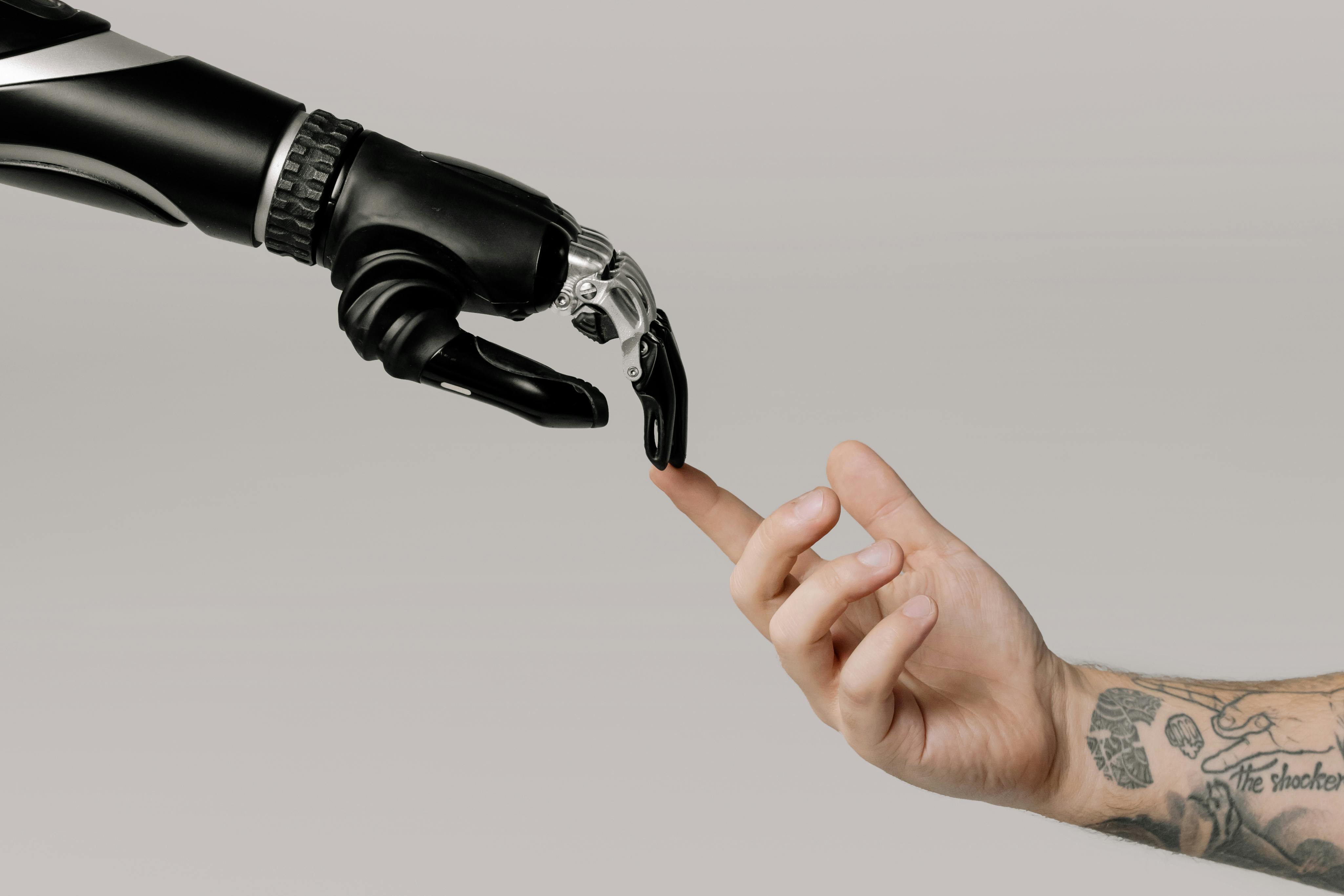
Introduction
For decades, we've embraced the principle that code should be as human-readable as possible. This focus on readability has underpinned collaboration, maintainability, and quality control in software engineering. However, as advanced language models like Claude 3.7 Sonnet emerge, there's a growing trend toward generating highly optimized, machine-readable code that prioritizes performance and seamless integration into automated systems.
This shift invites a provocative question: Are we on the verge of unwinding decades of progress in making code easily understood by humans and moving toward a future where system-to-system communications take center stage? In this post, we explore the evolution of coding practices—from the early days of low-level programming to modern human-centric approaches—examine the rise of machine-optimized code, and consider how advances in programming languages and development methodologies will shape the software engineering landscape.
The Evolution of Code Readability
A Historical Perspective
In the early days of computing, code was written in assembly languages or even as raw machine code—hardly accessible for most humans. As programming matured, high-level languages emerged to abstract away low-level details and make code more human-friendly. This evolution paved the way for practices and principles that emphasize clean syntax, modular design, and in-line documentation.
"As we've evolved from machine code to high-level languages, we've consistently prioritized human understanding over machine efficiency—until now."
Readable code became essential for:
-
Maintainability
Allowing teams to troubleshoot, refine, and enhance code over time.
-
Collaboration
Enabling developers around the world to contribute to a shared codebase productively.
-
Rapid Iteration
Supporting methodologies such as agile development, where clarity accelerates prototyping and testing.
These advancements have helped foster the strong, human-centric engineering cultures that have driven much of the innovation in our industry.
The Evolution of Programming Languages and Future Trends
Programming languages themselves have undergone a remarkable evolution. Early languages—such as FORTRAN, COBOL, and assembly—were designed with performance and direct hardware control in mind, often at the cost of readability and ease of use. Over time, languages evolved to prioritize developer productivity: from structured languages like C and Pascal to object-oriented languages such as C++ and Java, and finally to the modern era where languages like Python, JavaScript, and even functional languages promote clarity and rapid development.
1970s: FORTRAN (Machine Focus)
PROGRAM CALC
DIMENSION A(100)
READ(5,10) N,(A(I),I=1,N)
10 FORMAT(I5/(5F10.2))
SUM = 0.0
DO 20 I=1,N
20 SUM = SUM + A(I)
AVG = SUM/FLOAT(N)
WRITE(6,30) AVG
30 FORMAT(1X,'AVERAGE = ',F10.2)
STOP
END
2020s: Python (Human Readability)
def calculate_average(numbers):
"""Calculate the average of a list of numbers."""
if not numbers:
return 0
# Sum all numbers and divide by count
total = sum(numbers)
return total / len(numbers)
# Read input numbers
input_numbers = [float(x) for x in input().split()]
average = calculate_average(input_numbers)
print(f"AVERAGE = {average:.2f}")
Looking ahead, a new frontier is emerging. As artificial intelligence and advanced compilers become integral to development workflows, future programming languages are likely to incorporate a dual-layer approach. On one hand, a human-friendly syntax will continue to foster collaboration and maintenance; on the other, underlying machine-optimized constructs—enhanced and refined through iterative, conversational feedback loops with AI—will drive performance.
This vision of incremental development and rapid prototyping, where you "talk" to a model that implements your changes and requests feedback, represents a natural progression of agile methodologies and modern prototyping tools. Such a paradigm shift will not only redefine what it means for code to be "readable" but also require a complete overhaul of our development infrastructure and tooling, reshaping the software engineering field for the near future.
The Rise of Machine-Readable Code
Today's advanced language models—such as Claude 3.7 Sonnet—are predominantly trained on vast amounts of human-readable code. This approach means that these models excel at generating code that mirrors the structure, clarity, and commenting style that developers have perfected over decades. They produce code that is familiar, making it easy to integrate into existing, human-centric workflows.
"As we shift from human-readable to machine-optimized code, we're not abandoning decades of progress—we're evolving our relationship with code itself."
However, this training paradigm is merely a reflection of the data available. Looking to the future, we can expect the emergence of a new generation of specialized models. These models will likely be trained on synthetically generated, machine-readable code—code specifically optimized for performance and system-to-system communication. The result will be the generation of highly efficient, lean code that forgoes many of the human-oriented markers (like verbose comments and overly descriptive variable names) in favor of compact, optimized structures.
Human-Readable Code
// Function to calculate total price with tax function calculateTotalPrice(items, taxRate) { // Initialize total let subtotal = 0;
// Add price of each item
for (const item of items) {
subtotal += item.price;
}
// Calculate tax and return final amount
const taxAmount = subtotal * taxRate;
return subtotal + taxAmount;
} Machine-Optimized Code
function c(i,t){return i.reduce((a,c)=>a+c.price,0)*(1+t)} Such a shift in code generation could lead to a dramatic evolution in the software engineering field. New systems will be designed for direct machine integration, driving improvements in execution speed and automated operations. At the same time, this trend will necessitate a rebuilding of our current infrastructure and tooling to better accommodate machine-optimized code. Despite these advancements, it is crucial to retain a human-in-the-loop for clarifying business requirements and ensuring quality control—a role that remains indispensable in the end-to-end engineering process.
Balancing Human and Machine Optimization
Weighing the Trade-Offs
On the one hand, human-readable code has been the bedrock of collaboration, debugging, and onboarding; on the other, machine-readable code offers tantalizing advantages in execution speed and integration with automated systems. However, relying exclusively on machine-optimized code introduces challenges:
-
Opacity
Highly condensed, machine-optimized code may be difficult for humans to decipher during troubleshooting or iterative improvements.
-
Onboarding Complexity
A steeper learning curve for new team members could slow progress and complicate maintenance.
-
Quality Assurance
Even the most efficient code requires human oversight for validating business logic and ethical standards.
The Enduring Need for Human-in-the-Loop
Despite the allure of automated, machine-focused processes, human experts remain essential:
-
Clarification of Ambiguities
Humans excel at translating complex, evolving business requirements into actionable code.
-
Rigorous Quality Control
Automated testing is powerful, yet the judgment needed to assess nuanced performance or security risks remains a uniquely human skill.
-
Ethical Oversight
Critical decisions on data handling, privacy, and user safety require human ethical judgment, ensuring that technology serves society responsibly.
A balanced approach—leveraging both the efficiency of automated code generation and the strategic insight of human engineers—will be key to navigating the digital landscape of tomorrow.
Implications for Tech Leadership
Guiding the Transition
For today's technology leaders, especially modern CTOs, the shift toward machine-optimized code is more than a technical nuance—it's a strategic imperative. Leaders must:
-
Invest in Hybrid Infrastructures
Build systems that can accommodate both machine-optimized and human-readable code, ensuring flexibility and resilience.
-
Adapt Development Workflows
Embrace incremental, rapid prototyping methods with real-time feedback loops where AI tools and human intuition work in tandem.
-
Re-skill Teams
Encourage continuous learning so that engineering teams can effectively use these new models while preserving the strategic insights that only experienced developers can offer.
A Vision of the Future
The future of software development will likely inhabit a spectrum—from fully automated, machine-to-machine systems to hybrid models where robust human oversight is indispensable. By carefully balancing these approaches, tech leaders can drive digital transformation that is both efficient and ethically grounded.
Conclusion
By integrating the strengths of automated efficiency with strategic human insight, technology leaders can ensure that the future of software development is both groundbreaking and responsibly managed.
The journey from human-readable to machine-optimized code represents a profound shift in programming paradigms. While advanced language models have reaped the benefits of decades of human-centric development, the emerging wave of specialized models promises even leaner, faster, machine-focused code.
As our development processes become increasingly incremental—driven by rapid prototyping, conversational interactions with AI, and dynamic feedback cycles—the role of human oversight remains critical. In embracing this balanced evolution, CTOs and engineering teams can harness the next wave of innovation without sacrificing the quality and ethical standards that have long underpinned our craft.


